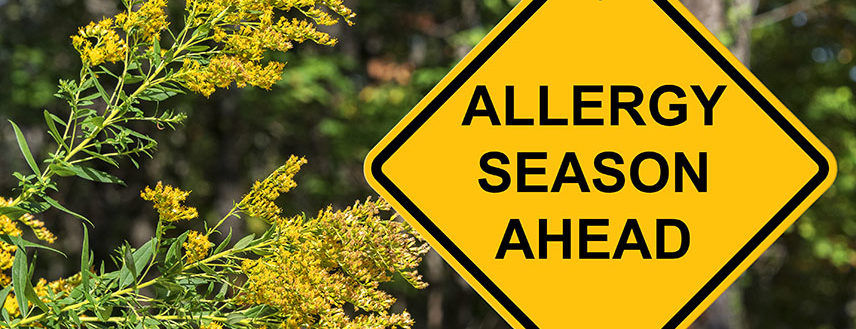
Nearly one in five Americans suffers from seasonal allergic rhinitis, more commonly known as hay fever. Hay fever occurs when a person’s immune system overreacts to an outdoor allergen such as pollen. As the pollen of insect-pollinated plants are too heavy to remain airborne for long, the most common culprits responsible for hay fever are wind-pollenated plants such as trees, grasses, and weeds. There are proactive ways to protect yourself from pollen.
Plant Pollen
Ragweed and other weeds, such as curly dock, lambs quarters, pigweed, plantain, sheep sorrel, and sagebrush are prolific producers of pollen allergens. Ragweed season runs from August to November, but pollen levels usually peak by mid-September in many areas in the country. Pollen counts are highest in the morning, and on dry, hot, windy days.
Protecting Yourself
- Between 5:00 and 10:00 in the morning, stay indoors. Save outside activities for late afternoon or after a heavy rain, when pollen levels are lower.
- Keep windows in your home and car closed to lower exposure to pollen. Keep cool with air conditioners. Don’t use window or attic fans.
- Use a dryer, not a line outside; dry your clothes and avoid collecting pollen on them.
Grass Pollen
Grass pollens are regional as well as seasonal. Their levels also are affected by temperature, time of day, and rain. Only a small percentage of North America’s 1,200 grass species cause allergies, including:
- Bermuda grass
- Johnson grass
- Kentucky bluegrass
- Sweet vernal grass
- Timothy grass
- Orchard grass
Protecting Yourself
- Between 5:00 and 10:00 a.m., stay indoors. Save outside activities for late afternoon or after a heavy rain, when pollen levels are lower.
- Keep windows in your home and car closed to lower exposure to pollen. Keep cool with air conditioners. Don’t use window or attic fans.
- Use a clothes dryer, not a line outside, to avoid collecting pollen on them.
- Have someone else mow your lawn. If you mow, wear a mask.
Tree Pollen
Trees produce pollen earliest, as soon as January in the south, and as late as May and June in the northeast. They release huge amounts that can be distributed miles away. Fewer than 100 kinds of trees cause allergies. The most common tree allergy is against oak, but others include catalpa, elm, hickory, sycamore, and walnut.
Protecting Yourself
- Follow the same protective strategies related to time of day, closed windows, and clothes dryers noted in “Protecting yourself” under Grass Pollen, above.
- Plant species that do not aggravate allergies, such as crape myrtle, dogwood, fig, fir, palm, pear, plum, redbud, and redwood trees, or the female cultivars of ash, box elder, cottonwood, maple, palm, poplar, or willow trees.

Leave a Reply